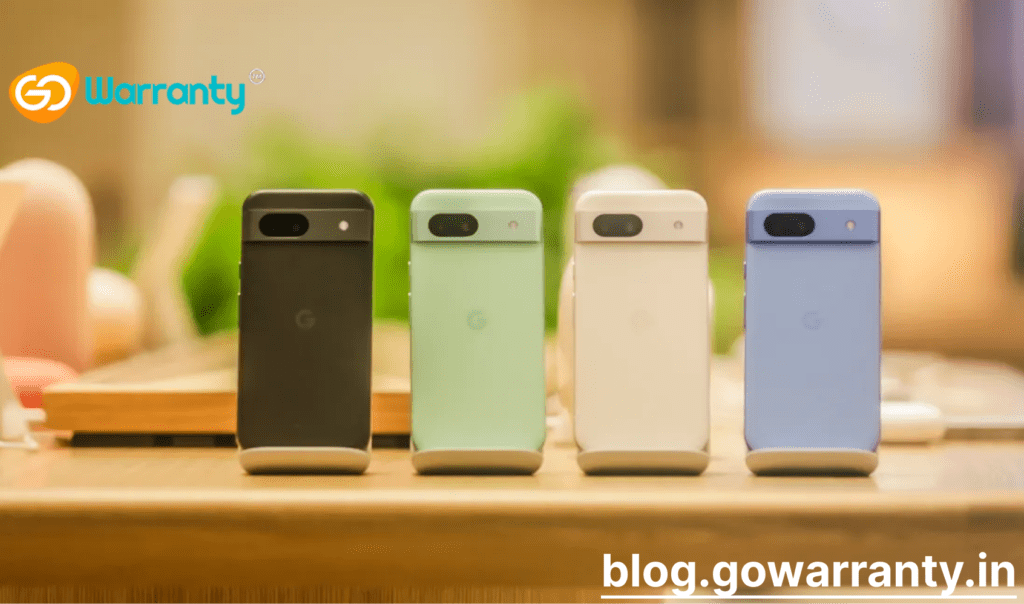When Google unveiled the Pixel 7a last year, it brought forth a compelling offering, marking it as one of the most feature-rich devices in the Pixel A-series lineup, particularly in terms of hardware. Introducing features like wireless charging and an IP67 rating for dust and water resistance, alongside its characteristic “Pixel” imaging quality, the Pixel 7a garnered attention despite its price tag of Rs. 43,999, positioning it towards the higher end of the mid-range segment. This year, however, the Google Pixel 8a doesn’t bring substantial novelty, apart from the inclusion of the new Tensor G3 processor and a 120Hz refresh rate display. While most internal hardware components remain unchanged from its predecessor, Google, much like Samsung, relies on AI features facilitated by the Tensor G3 to entice users into upgrading to the latest model. So, what exactly does the new Pixel 8a offer? Let’s delve deeper.

Beyond the aforementioned changes, one significant upgrade that the Google Pixel 8a offers over the Pixel 7a is in terms of storage. Indian users now have the option to choose between the 128GB storage variant (priced at Rs. 52,999) and the new 256GB variant (available at Rs. 59,999). Despite its appeal, it’s essential to note that the OnePlus 12, offering a superior overall phone experience, is priced at Rs. 64,999 for the 12GB RAM and 256GB storage variant.
Introducing two new colors – Bay and Aloe
The most noticeable change in the Google Pixel 8a lies in its design. Introducing two new colors – Bay and Aloe – the phone’s aesthetic has evolved, transitioning from sharp-cornered rectangles to rounded corners. The rear panel, still crafted from polycarbonate, now boasts a delightful frosted matte finish, distinct from its predecessors. The visor-like camera module sits flatter on the panel, seamlessly merging with the side frame, all while maintaining its IP67 rating for dust and water resistance.
While the Pixel 7a upgraded to a 90Hz display, Google elevates the Google Pixel 8a display to a 120Hz unit, featuring its Actua branding. The 6.1-inch screen offers a flat profile with slightly curved edges on its protective glass, albeit adorned with noticeable bezels, particularly reminiscent of the iPhone XR from 2018.
Under the hood, Google opts for its Tensor G3 processor, which, while not a performance powerhouse akin to its predecessors, introduces several new AI-enabled features to the Pixel 8a. The inclusion of features like Magic Editor and Audio Eraser, alongside a more secure Face Unlock experience, aims to enhance the user experience.
The camera setup remains unchanged, with a 64-megapixel primary camera boasting SuperRes Zoom images up to 8X, accompanied by a 13-megapixel ultrawide camera. Similarly, the 13-megapixel selfie camera remains consistent with its predecessor.
The Pixel 8a’s battery receives a slight boost, growing from the 4,385mAh unit on the Pixel 7a to a marginally larger 4,492mAh capacity. However, the device retains the 18W wired charging and Qi-standard wireless charging capabilities.
While the Pixel 8a showcases refreshing design updates, it primarily retains the same underlying hardware. This echoes Samsung’s strategy with its Galaxy S24 series this year. Despite introducing new AI features, the Pixel 8a’s increased price places it in the premium segment, bridging the gap between itself and the premium Pixel 8. However, competing with high-end heavyweights from Chinese brands and Samsung, the Pixel 8a faces stiff competition, particularly in terms of camera hardware flexibility and capability.
Camera module seamlessly integrates with the rear panel,
Despite its incremental upgrades, the Google Pixel 8a still manages to deliver a fresh and appealing aesthetic, especially with its introduction of two new finishes – Bay and Aloe. The transition from sharp-edged rectangles to rounded corners gives the device a more modern and ergonomic feel. The frosted matte finish on the rear panel adds a touch of sophistication, elevating the overall look and feel of the phone. Additionally, the flatter camera module seamlessly integrates with the rear panel, contributing to a sleek and cohesive design.
While design changes are notable, the Pixel 8a’s display is where users will notice the most significant upgrade. The shift to a 120Hz refresh rate display enhances the overall user experience, delivering smoother animations and more fluid scrolling. The Actua branding further underscores Google’s commitment to providing a premium display experience. Despite the presence of chunky bezels, particularly at the bottom, the 6.1-inch screen offers ample real estate for immersive content consumption and productivity tasks.
Under the hood, Google’s decision to equip the Pixel 8a with the Tensor G3 processor underscores its focus on AI-driven capabilities. While not a performance powerhouse compared to flagship chipsets, the Tensor G3 introduces a slew of new features aimed at enhancing user productivity and creativity. From the Magic Editor to the Audio Eraser, these AI-enabled features showcase Google’s commitment to pushing the boundaries of what’s possible with smartphone technology.
However, where the Google Pixel 8a may fall short is in its camera hardware. While the 64-megapixel primary camera and 13-megapixel ultrawide camera offer respectable performance, they may struggle to compete with the more flexible and capable camera setups found in high-end flagship devices. Additionally, while the inclusion of SuperRes Zoom images up to 8X is a welcome addition, it may not be enough to sway users who prioritize camera performance above all else.
Battery life remains a strong point for the Pixel 8a, thanks to its slightly larger 4,492mAh battery capacity. Coupled with the efficient optimization of the Tensor G3 processor and the device’s software, users can expect all-day battery life, even with moderate to heavy usage. The continued support for 18W wired charging and Qi-standard wireless charging ensures that users can quickly top up their device when needed, further enhancing the overall user experience.
In terms of software, the Pixel 8a ships with the latest iteration of Android, ensuring access to the latest features and security updates. Google’s commitment to providing a clean and bloatware-free user experience remains evident, with the Pixel 8a delivering a streamlined and intuitive interface that prioritizes ease of use.
Overall, while the Google Pixel 8a may not offer groundbreaking innovations, it presents a compelling option for users seeking a well-rounded smartphone experience. Its refreshed design, improved display, and AI-driven features make it a worthy contender in the mid-range segment. However, with increased competition from Chinese brands and Samsung in the premium segment, the Pixel 8a may face challenges in distinguishing itself as the go-to choice for discerning users.

